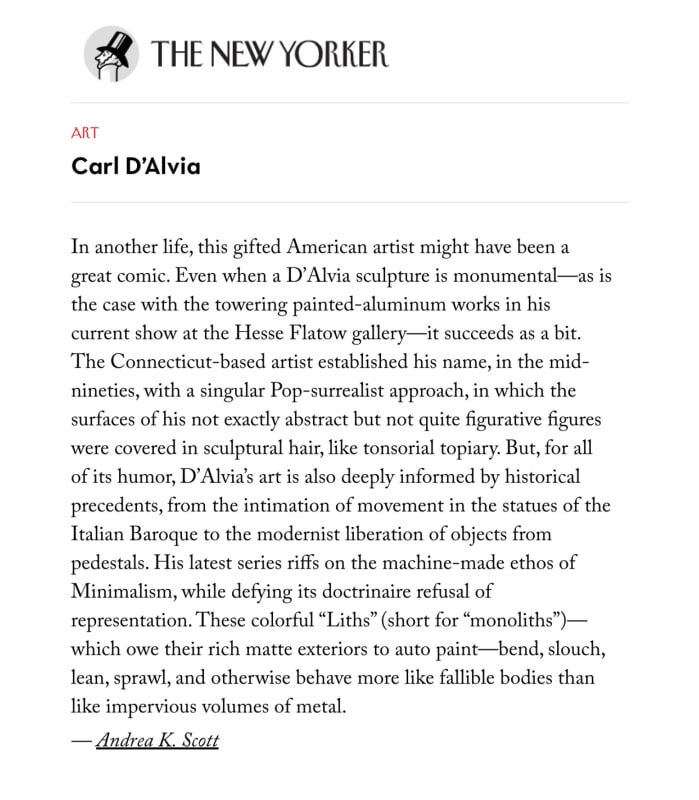In another life, this gifted American artist might have been a great comic. Even when a D’Alvia sculpture is monumental—as is the case with the towering painted-aluminum works in his current show at the Hesse Flatow gallery—it succeeds as a bit. The Connecticut-based artist established his name, in the mid-nineties, with a singular Pop-surrealist approach, in which the surfaces of his not exactly abstract but not quite figurative figures were covered in sculptural hair, like tonsorial topiary. But, for all of its humor, D’Alvia’s art is also deeply informed by historical precedents, from the intimation of movement in the statues of the Italian Baroque to the modernist liberation of objects from pedestals. His latest series riffs on the machine-made ethos of Minimalism, while defying its doctrinaire refusal of representation. These colorful “Liths” (short for “monoliths”)—which owe their rich matte exteriors to auto paint—bend, slouch, lean, sprawl, and otherwise behave more like fallible bodies than like impervious volumes of metal.
Goings on About Town: Carl D'Alvia
Andrea K. Scott, The New Yorker, July 6, 2021


